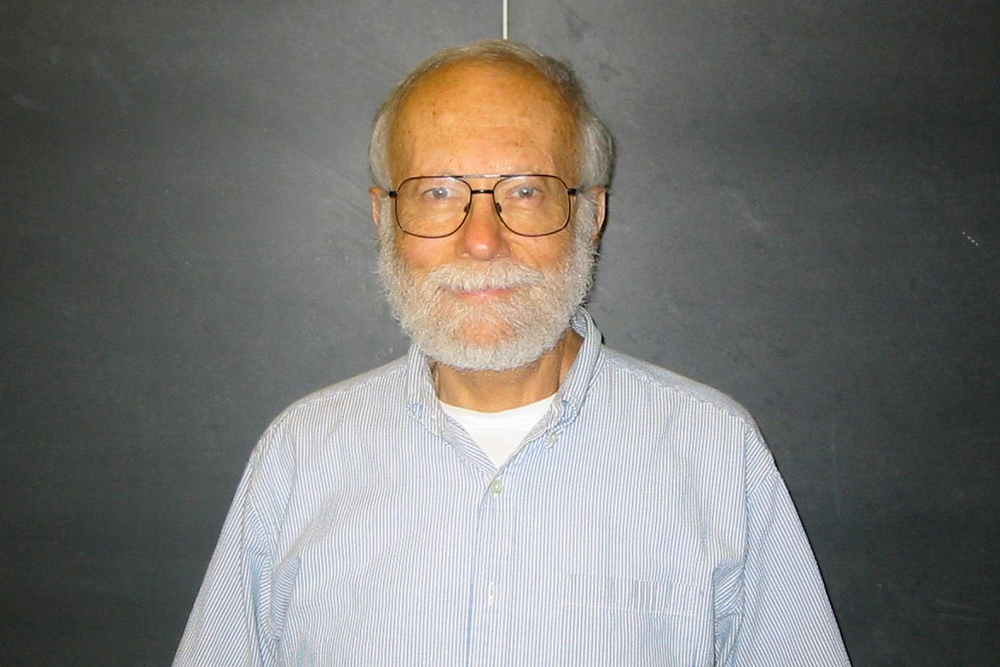Arthur Mattuck, professor emeritus of mathematics, dies at 91
- November 2, 2021

Arthur Paul Mattuck, emeritus professor of mathematics at MIT, passed away on Friday, Oct. 8, at the age of 91.
Mattuck came to MIT as a CLE Moore Instructor, a position he held from 1955 to 1957. He joined the faculty in 1958 and retired after 52 years of service in 2010. He continued to teach through fall 2019.
In his specialty, algebraic geometry, Mattuck contributed to the theory of curves and abelian varieties, and to the Riemann-Roch theorem. By the mid-1970s, he had graduated seven PhD students and had 18 mathematical descendants. Thereafter, he devoted his energy to an extensive review and revision of the mathematics undergraduate teaching program, so that the program could better serve the Institute.
Mattuck has long been recognized as one of the Institute’s most effective and innovative lecturers. In the early 1960s, he chaired the department’s Committee on First-Year Students and wrote the booklet, “Supplementary Problems for 18.01.” In 1973, he received the Class of 1922 Professorship Chair, which was renewed continuously through June 1991. Its initial citation asserted that Mattuck’s orientation to undergraduates’ “likes and dislikes, and how they will react to different pedagogical styles, subject, contents and curriculum formats, has been responsible for significant educational innovations at MIT.”
Mattuck revised the department’s first-year mathematics program, designing the calculus sequence 18.01,2 that has been widely influential and is still in use today. He introduced large-scale modular instruction for those first-year subjects, permitting self-pacing by the students, repeatable exams, grading conferences, and more. These innovations have been used, in modified forms, by many other universities. He ran workshops for calculus tutors, and developed the use of videotaping to improve the teaching of recitation sections, a tool that was soon adopted by other MIT departments. Mattuck led in developing the Undergraduate Mathematics Office (later the Academic Services Office), one of the first such offices at the Institute.
In 1981 Mattuck produced a second booklet, “The Torch or the Firehose: A Guide to Section Teaching,” a guide to recitation teaching at MIT. Written in an informal, good-humored style, it soon became a standard reference across the Institute and at other universities. A second edition was released in the mid-’90s. In 1998 Mattuck published the textbook “Introduction to Analysis” (reprinted in 2013). It provided a readable introduction to proofs for students of calculus advancing to real analysis.
Mattuck was department head from 1984 to 1989, and he chaired the department’s Undergraduate Committee from 1972 to 1979 and again from 1982 to 1984. He served on a number of Institute committees, including the Policy Committee of the Division for Study and Research in Education, the Ad-Hoc Committee on Grading, and the first committee overseeing the first-year pass/fail grading policy that was implemented in the late 1960s. He also served two terms on the Council of the American Mathematical Society, and was made an AMS Fellow in its inaugural class of fellows in 2013.
Mattuck was born June 11, 1930, in Brooklyn, New York. He received an AB degree from Swarthmore College in 1951, and a PhD from Princeton University in 1954, studying under Emil Artin. He received a National Science Foundation postdoctoral fellowship that he took at Harvard University in 1954-55, and came to MIT as a CLE Moore Instructor in 1955. He was appointed lecturer in 1957-58, joined the faculty as assistant professor in 1958, was promoted to associate professor in 1961, and to professor in 1965.
In 1989, Mattuck received the MIT School of Science Teaching Prize for Excellence in Undergraduate Education. He was in the first group of faculty to be named a Margaret MacVicar Fellow, in 1992.
Beyond mathematics, Mattuck was an avid gardener. Many department members benefited from the bounty from the “victory garden” that he cultivated in the Fenway for decades. He was also a talented musician who performed on either cello or piano in the department’s IAP Music Recital, essentially every year since its creation in the 1970s.
Mattuck is survived by his daughter Rosemary, her partner Jeffrey Broadman, and three nephews, Allan, Robin, and Martin. He was predeceased by his brother Richard Mattuck, a physicist.
A memorial service is being planned for a future date.
Sign Up For Our
Newsletter
Each day, we honor and remember those who have recently passed away.
Most Viewed
More
- Article Obituaries
- Celebrities
- Celebrity News
- Free Obituary
- Local
- News
- News & Advice
- NFL
- NHL
- Northside
- Norwin
- Obituaries
- Obituary
- Penn Hills
- Pirates
- Pitt
- Pittsburgh
- Plum
- Politics Election
- Premium Memorial
- Sports
- Steelers
- Theater Arts
- Top Stories
- Travel
- Tribune Review Obituaries
- US-World
- Valley News Dispatch
- West End
- Westmoreland
- World